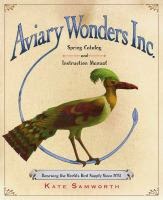The action takes place in a remote coastal area of British Columbia, as well as in Toronto. The Alberta tar sands are in there too. King moves smoothly between narrative threads, backstory and present day. His playful style is a joy to read:
"The morning traffic was heavy, and the limousine was reduced to drifting along with the schools of cars and lumbering pods of delivery vans and transport trucks, everyone jammed together fin to gill, in a sea of diesel fumes and exhaust."
My favourite character is Nicolas Crisp, with his idiosyncratic manner of speech:
"Ye know trailers from trawlers?"
"No."
"Nothing much to know. Simple they are, not like a house. Now there's a pox. A house, ye see, don't want to move. Once she's built, she figures to stay put. A trailer's more compliant. Ye doesn't likes where ye have come ashore? Well, just drop the hitch on the ball and away ye go. Trailer's the better companion. Happy on the road or off. All love for ye and your caprices and no complaining."
King drops in sly hints about the true identities of Crisp and his addled nephew, Sonny. There's one, in fact, in the passage above. I won't say more, to not spoil the fun.
Dorian Asher, CEO of an agribusiness corporation, is the bad guy. But he is also one who speaks the truth: "the occasional spill is the price we pay for cheap energy." Dorian brings to mind Oscar Wilde's Dorian Gray, not only for his name, but also because he's a hedonist and a man without a conscience.
There were so many times that I made connections to other books, and I love when that happens. There's an ocean barge carrying toxic waste, unable to find a port that will allow it to dock; it's loosely based on a true event, which also inspired Jonah Winter and Red Nose Studio to create the all-ages picture book Here Comes the Garbage Barge.
King seamlessly incorporates scientific and historical information, like the time in 1950 when an American pilot jettisoned a nuclear bomb over Quebec. One of the scariest genetically modified organisms, Klebsiella planticola bacteria, is central to the plot. It gives me shivers just thinking about its destructive potential. (Go ahead and google it.)
I've encountered readers who are hesitant to read Thomas King's work for fear that too much will go over their heads. Looking back on what I've written so far, I hope I don't reinforce that misconception. The Back of the Turtle is totally enjoyable and accessible. It's heartbreaking and heart healing. I've saved writing about it for the last day of the year because its one of my top reads of 2014.
__________________________________________________________________________
Nobody writes quite like King, but the closest readalikes are possibly Monkey Beach (Eden Robinson) and Boy Snow Bird (Helen Oyeyemi).
More from Thomas King: The Inconvenient Indian: A Curious Account of Native People in North America - nonfiction that I wish everyone would read.
I've encountered readers who are hesitant to read Thomas King's work for fear that too much will go over their heads. Looking back on what I've written so far, I hope I don't reinforce that misconception. The Back of the Turtle is totally enjoyable and accessible. It's heartbreaking and heart healing. I've saved writing about it for the last day of the year because its one of my top reads of 2014.
__________________________________________________________________________
Nobody writes quite like King, but the closest readalikes are possibly Monkey Beach (Eden Robinson) and Boy Snow Bird (Helen Oyeyemi).
More from Thomas King: The Inconvenient Indian: A Curious Account of Native People in North America - nonfiction that I wish everyone would read.














_Bacteria.jpg)

























